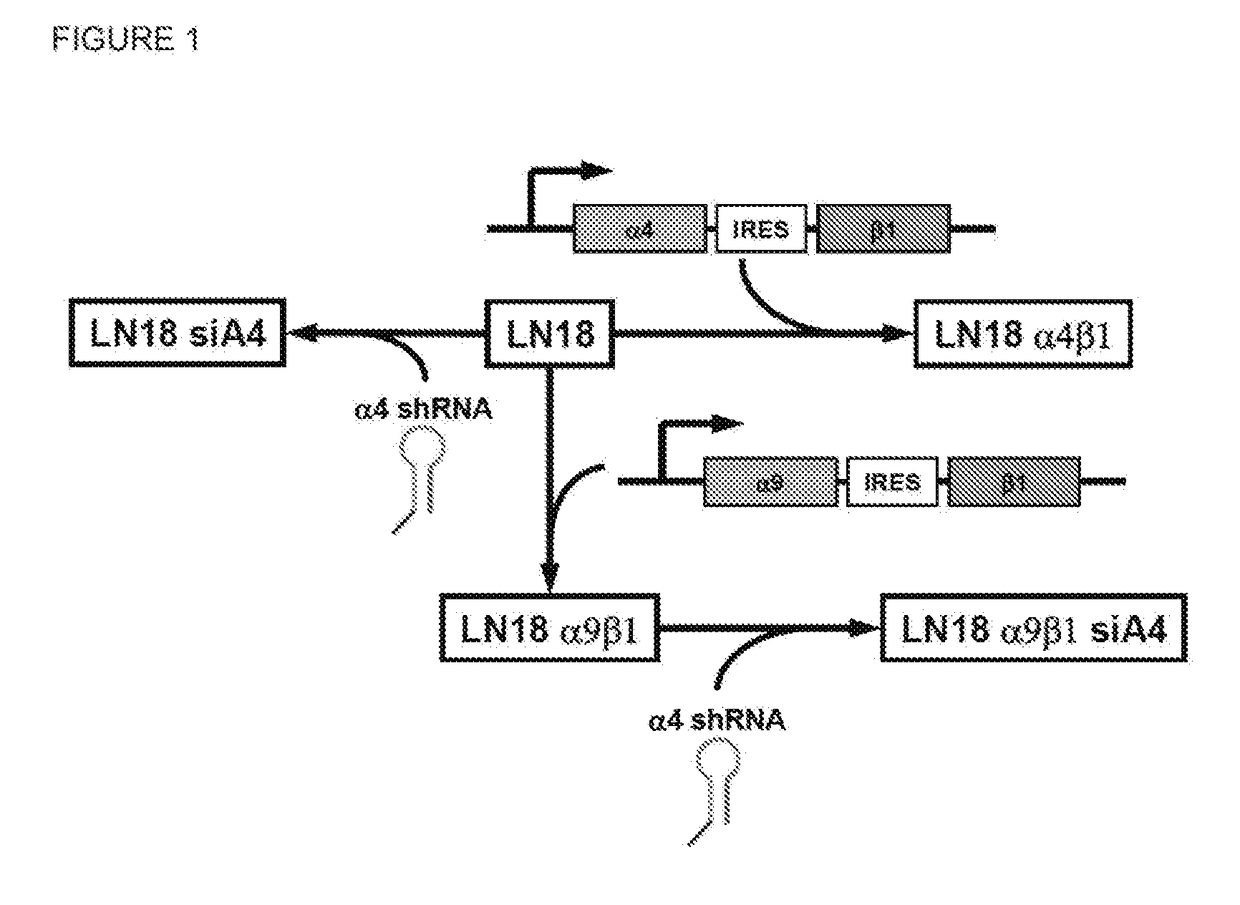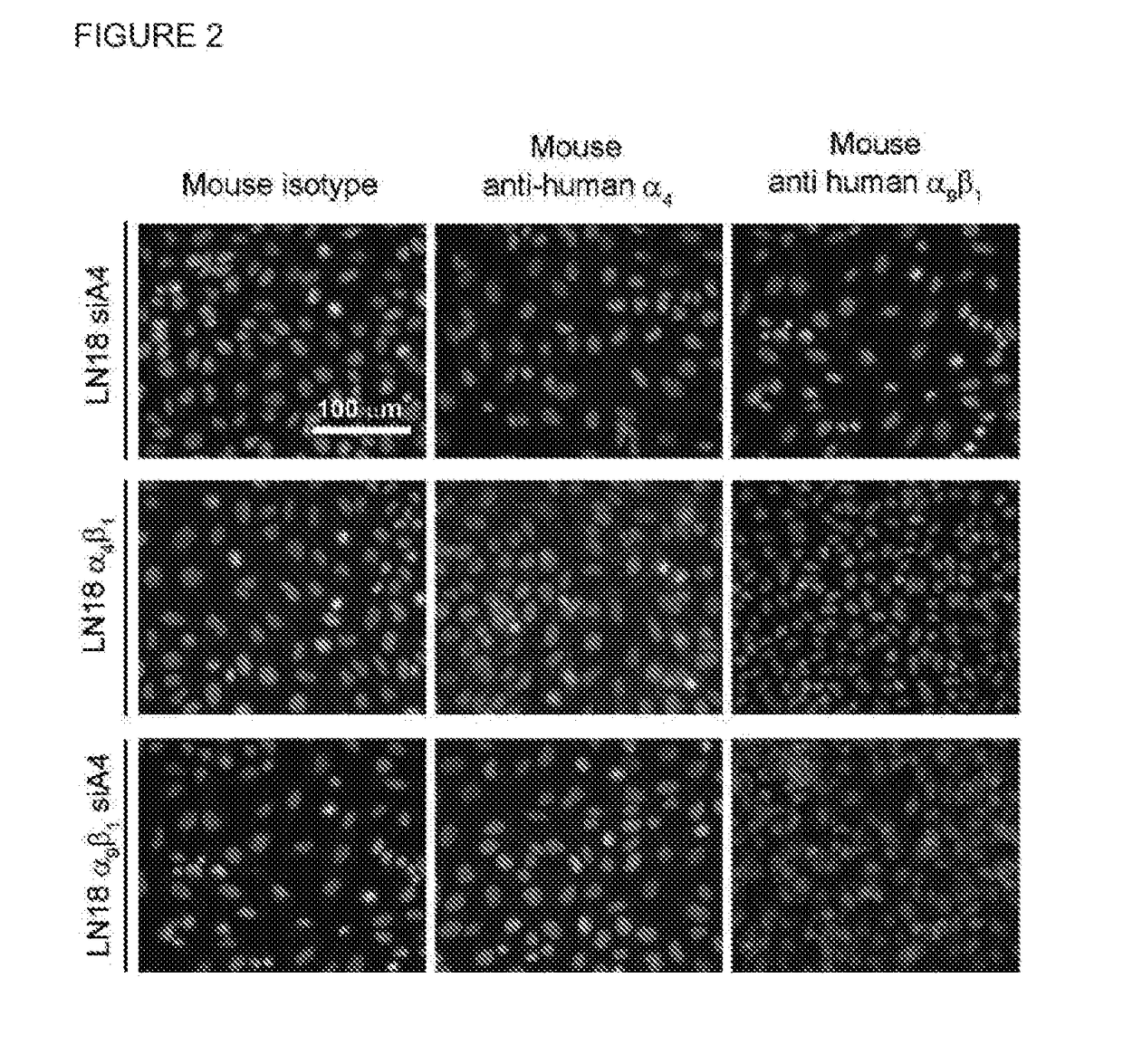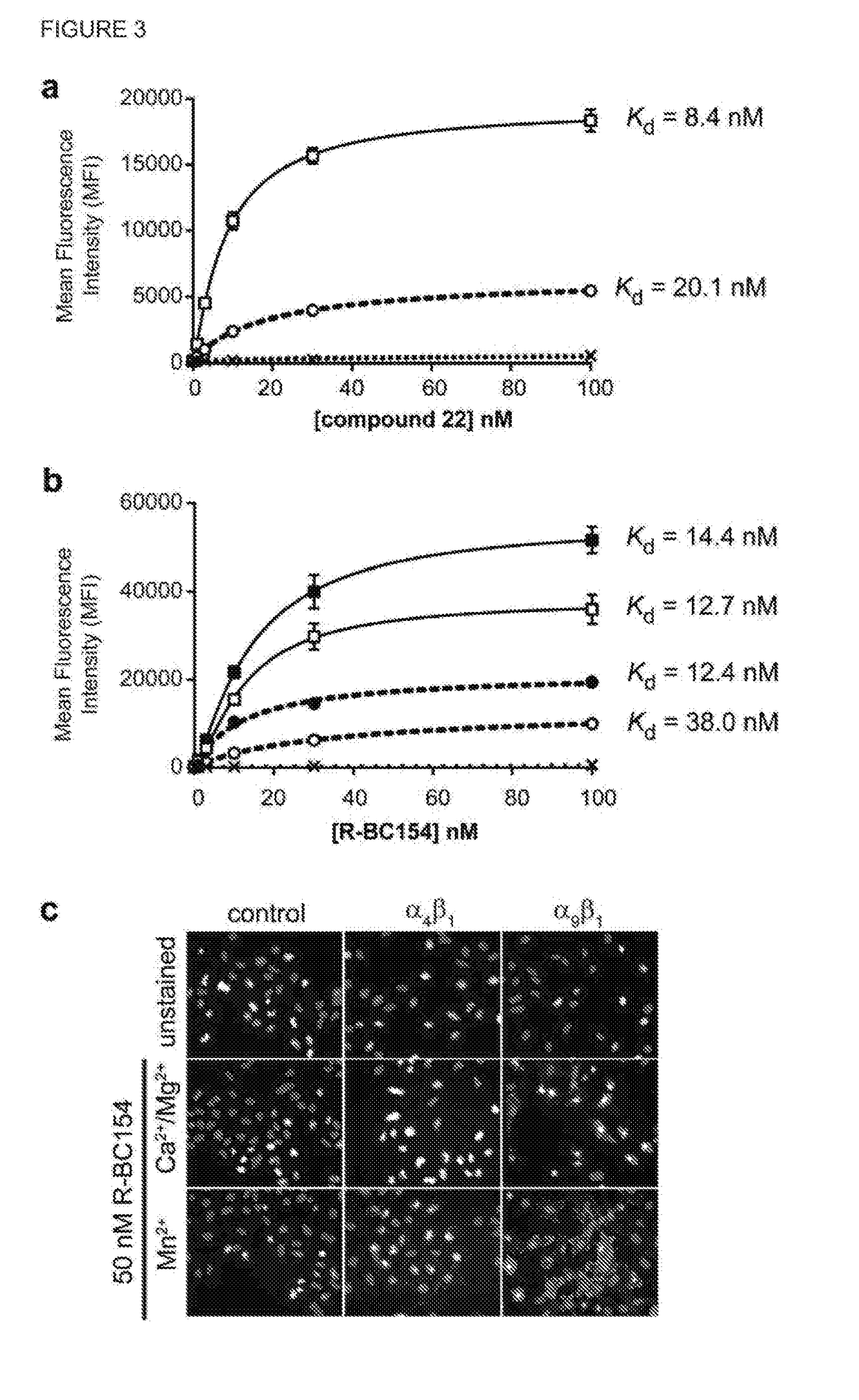Dislodgement and release of hsc from the bone marrow stem cell niche using alpha9 integrin antagonists
- Summary
- Abstract
- Description
- Claims
- Application Information
AI Technical Summary
Benefits of technology
Problems solved by technology
Method used
Image
Examples
example 1a
n of N-(Benzenesulfonyl)-L-prolyl-L-O-(1-pyrrolidinylcarbonyl)tyrosine (BOP)
[0450]Synthesis of BOP began from the dipeptide 26, as shown in the following Scheme 1:
[0451]Deprotection of the tert-butyl protecting group of 26 using trifluoroacetic acid at 0° C. provided phenol 27, which was used in the next step, after aqueous work-up, without further purification. Reaction of phenol 27 with 1-pyrrolidinecarbonyl chloride proceeded smoothly in the presence of potassium carbonate to provide carbamate 28 in good yield (74%) over two steps. Hydrogenolysis of the Cbz protecting group was complete within 3 hours, and the resulting amine was obtained in excellent yield (85%) after flash chromatography. Amine 29 was then reacted with benzenesulfonyl chloride in the presence of base to give the sulfonamide 30 in excellent yield (96%) after flash chromatography. Finally, the methyl ester moiety of 30 was saponified using sodium hydroxide, followed by ion-exchange on Amberlyst resin, to provide ...
example 1b
n of Fluorescent Labelled Integrin Antagonist with PEG Spacer (Compound 22)
[0459]
[0460]The general strategy for the fluorescent labelling of BOP was based on an efficient strategy for installing a trans-configured bifunctional PEG linker at the C4-position of BOP for subsequent conjugation to a fluorescent tag.
[0461]Lactone 4 has previously been reported as a versatile synthon for accessing 4-cis-hydroxy proline based dipeptides through direct acylation with protected amino acids. Subsequent activation of the 4-cis-hydroxy group followed by SN2 displacement with nucleophiles would then provide the desired 4-trans-configured proline derivatives. Thus, we envisaged a variety of C4-functionalised derivatives of BOP could be acquired starting from lactone 4 and tyrosine derivative 7 (Scheme 2). Lactone 4 was readily prepared by treatment of N-phenylsulfonyl-trans-4-hydroxy-L-proline under Mitsunobu conditions employing DIAD and PPh3. The tyrosine derivative 7 was synthesised from protec...
example 1c
n of R-BC154 (Compound 25)
[0482]Compound 25 (R-BC154), which lacks the PEG-spacer was also synthesised, as shown in the following Scheme 5:
[0483]Thus, hydrolysis of the methyl ester 18 with NaOH gave the deprotected azide inhibitor 23, which was subsequently reacted with N-propynyl sulforhodamine B 24 in the presence of CuSO4, sodium ascorbate and TBTA to give the fluorescent labelled (R-BC154) in 43% yield after purification by HPLC (Scheme 4).
[0484]By way of exemplification we provide actual reaction conditions for the formation of fluorescently labelled BOP derivative 25, starting from methyl ester 18.
Step 1: (S)-2-((2S,4R)-4-Azido-1-(phenylsulfonyl)pyrrolidine-2-carboxamido)-3-(4-((pyrrolidine-1-carbonyl)oxy)phenyl)propanoic acid (23)
[0485]The methyl ester 18 (420 mg, 0.737 mmol) in EtOH (10 mL) was treated with 0.2 M NaOH (4.05 mL, 0.811 mmol) and stirred at rt for 1 h. The mixture was concentrated under reduced pressure to remove EtOH and the aqueous phase acidified with 10% H...
PUM
| Property | Measurement | Unit |
|---|---|---|
| Dimensionless property | aaaaa | aaaaa |
| Dimensionless property | aaaaa | aaaaa |
| Dimensionless property | aaaaa | aaaaa |
Abstract
Description
Claims
Application Information
 Login to View More
Login to View More - R&D
- Intellectual Property
- Life Sciences
- Materials
- Tech Scout
- Unparalleled Data Quality
- Higher Quality Content
- 60% Fewer Hallucinations
Browse by: Latest US Patents, China's latest patents, Technical Efficacy Thesaurus, Application Domain, Technology Topic, Popular Technical Reports.
© 2025 PatSnap. All rights reserved.Legal|Privacy policy|Modern Slavery Act Transparency Statement|Sitemap|About US| Contact US: help@patsnap.com



